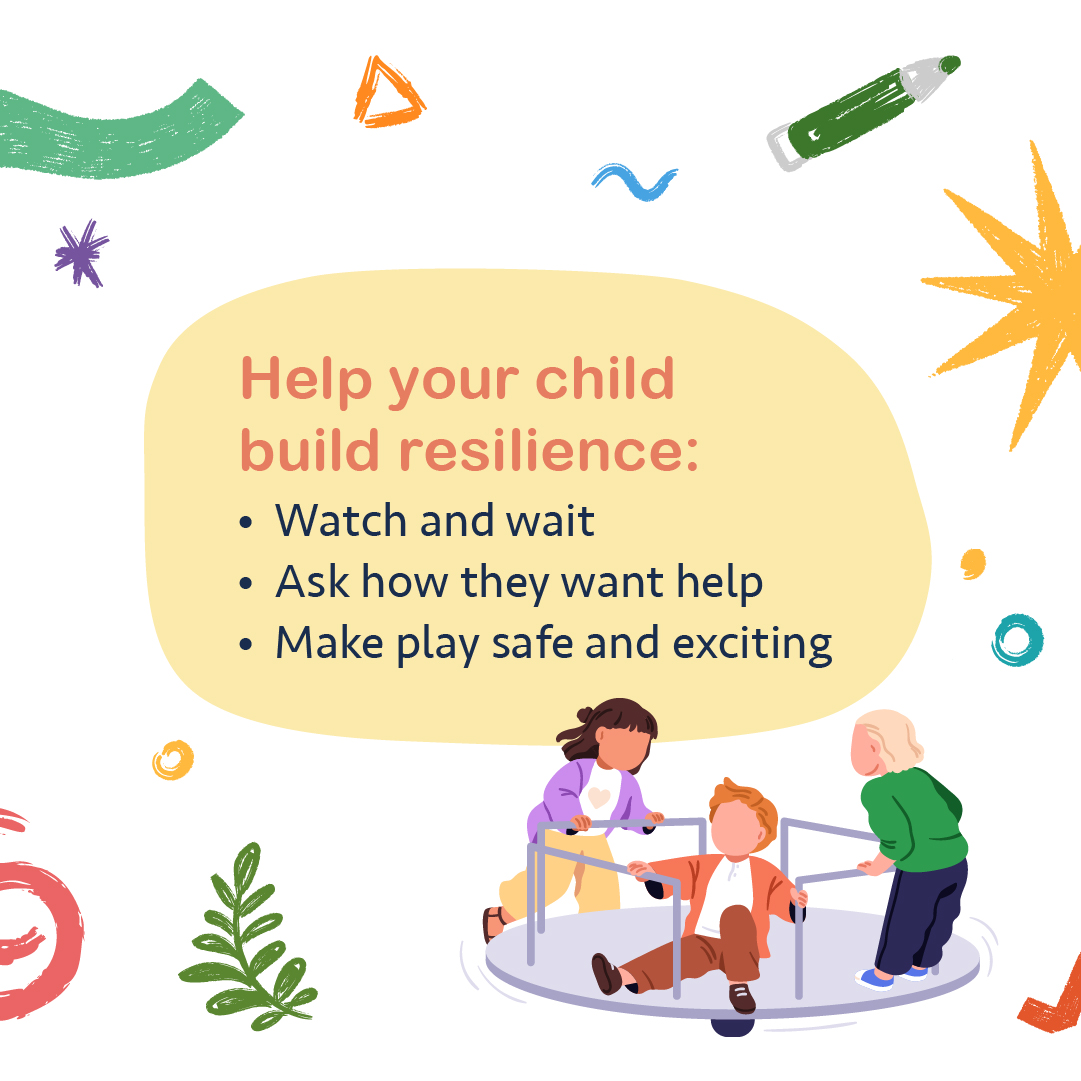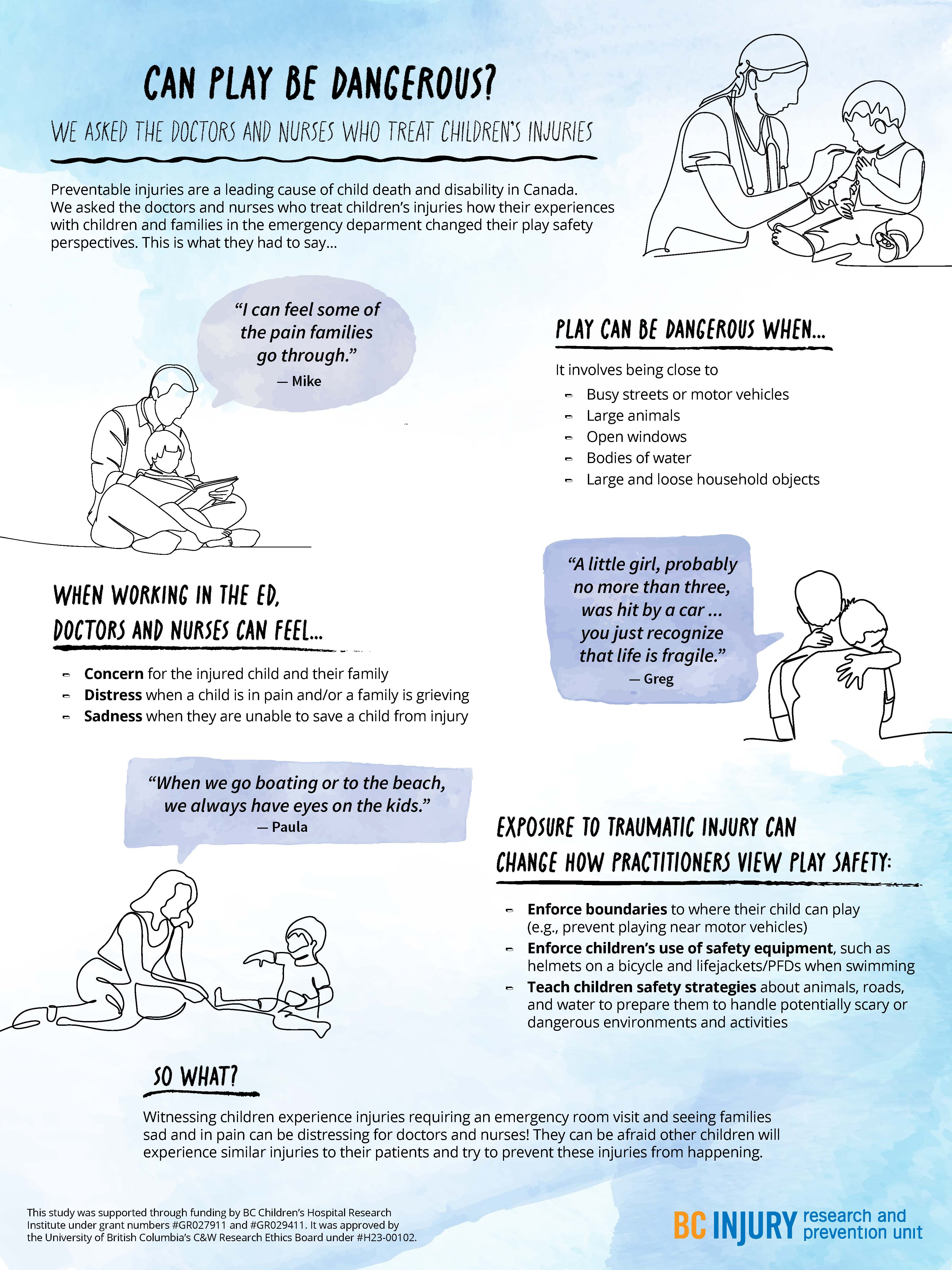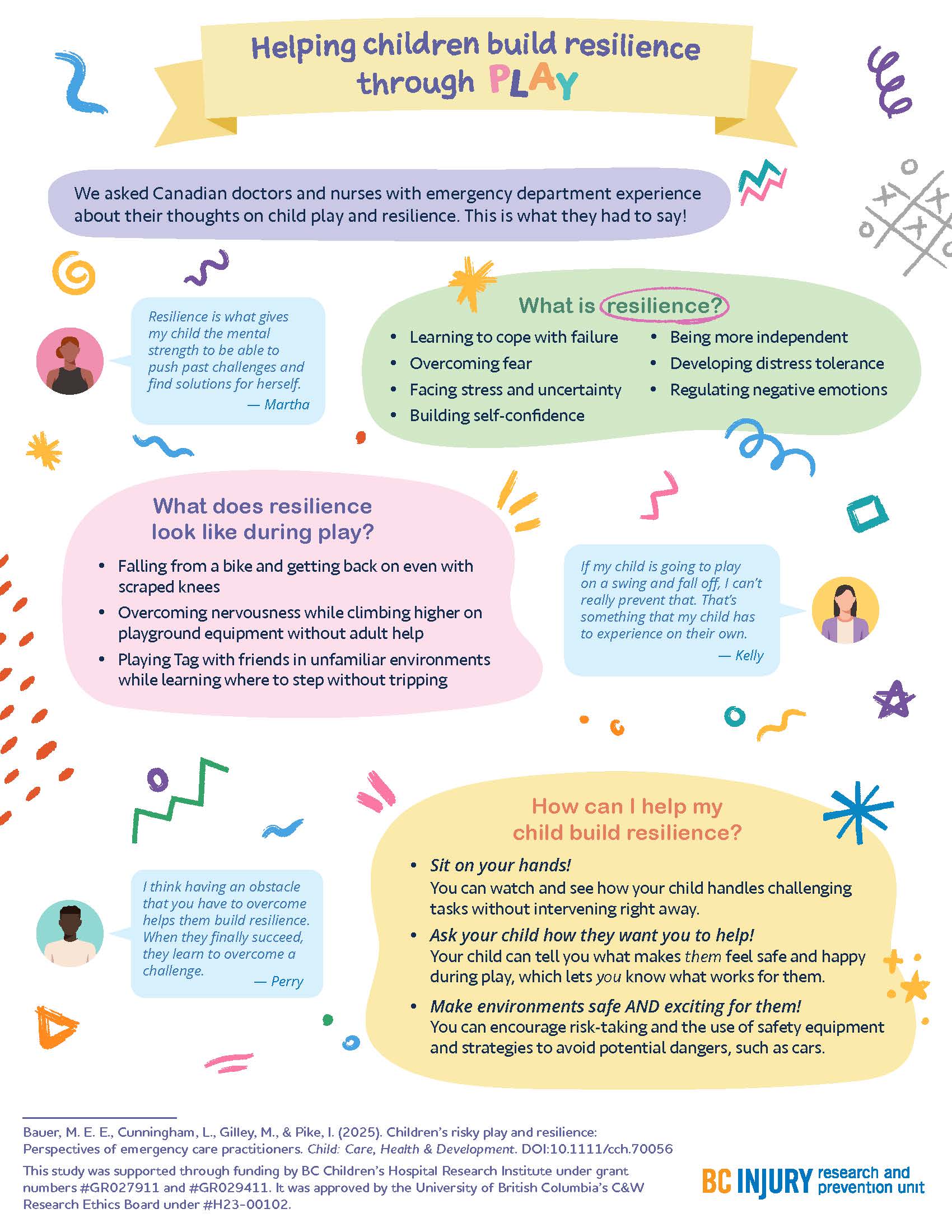Safety from a child’s point of view: The VOICES projects

Since 2016, researchers at the BC Injury Research and Prevention Unit (BCIRPU) have undertaken a series of projects that empower children to take initiative in advocating for safety in their communities.
Known collectively as the Voices of Children and Youth (VOICES), these projects explore how placing children at the centre of information-gathering and decision-making can inform community injury prevention policy and practice improvements.
Each VOICES project has been different, but a few key elements remain the same:
- Children are given education in journalism and participatory photo mapping (PPM) techniques;
- Children are given the opportunity to identify and record “safe” and “unsafe” places in their community;
- Children learn how to advocate for change by sharing these observations with their peers and adults through public speaking, advocacy, and civic and community engagement.
“The overarching theme of VOICES is to actually let kids voice their thoughts and feelings about safety and injury prevention without the scholar or adult getting in the way, or overshadowing their voices,” said Dr. Ian Pike, lead researcher on each of the studies.
Read about each of the VOICES projects below.
VOICES is about providing kids the opportunity to indicate their levels of comfort, thrill-seeking, and perceptions of safe and unsafe places, and then asking them, "What would you like to do about it?" —Dr. Michelle Bauer, BCIRPU Research Associate
VOICES Tsleil-Waututh
This project, which took place in 2013/2014, focused on road safety and child passenger safety, and was the initial First Nations community to pilot the VOICES approach. Children moved around their community, capturing images and narrative specific to pedestrian and child safety in the pick-up and drop-off zone outside of their child care centre. A final report was prepared for the use of the Tsleil-Waututh nation and child care centre administrators.
The research team established relationships with Tsleil-Waututh community members over the course of a year prior to the study. Under OCAP principles, a publication was produced and approved in partnership with Tsleil-Waututh reviewing community interventions to improve Aboriginal child passenger safety.

VOICES New Westminster
In 2016, the City of New Westminster released a Child and Youth Friendly Community (CYFC) Strategy, which aimed to demonstrate the city’s efforts towards being child- and family-friendly.
Contrary to usual practice, in 2017 PhD student Desiree Wilson and members of the BCIRPU opted to ask children directly about what they thought were child-friendly spaces in the city. The team partnered with a local school and engaged 51 students 11-to-13-years-old, giving them the opportunity and agency to lead the conversation about their own safety.
Children documented their daily journeys to and from school, as well as the places where they played. Cameras in hand, they captured what they believed was making New Westminster more or less child-friendly. Using these images, the children identified a number of key locations they found to be problematic. They then prepared and presented their findings to the New Westminster Mayor and City Council, resulting in the implementation of safety improvements for children and youth.
This experience gave children the agency to represent themselves, fostering skills in critical observation, research, and presentation, enabling policies to reflect the voices for whom they are made.
In 2020, this project was published in the Routledge Handbook of Designing Spaces for Young People, a resource guide for researchers, design and planning professionals, community leaders, and youth advocates. It outlines how to increase young people’s access to, and use of, public spaces, as well as their role in design and decision-making processes.
“It is important not only to involve children in consultation processes, but also for decision-makers to take children’s perspectives and ideas seriously when planning and designing cities,” said Wilson in 2020.
VOICES Akwesasne
In 2018, the BCIRPU had the opportunity to work with the Akwesasne Mohawk community to involve the Nation’s children in finding ways to improve safety and prevent injuries. Located on the St. Lawrence River on the border of Ontario and New York state, Akwesasne Mohawk community is comprised of three areas. This iteration of the VOICES project employed similar methods, including PPM, but was adapted by Indigenous leaders and youth to better suit the cultural practice of storytelling. The children who participated in the study shared their observations with the Grand Chief, Chiefs, and Councils of Akwesasne. This resulted in a plan to address the issues identified, including funding for the immediate implementation of a safer dock, diving board, and swimming area.
VOICES Hupačasath
The youth of the Hupačasath First Nation, located on Vancouver Island, adapted PPM to a video format. This project ran from 2017 to 2019. This resulted in the creation of short, PSA-style videos to raise awareness about their safety concerns in their community, particularly at the community spiritual grounds at Sproat Lake. The videos were used to advocate for grant funding applications, which ultimately enabled safety equipment and improvements to be made at the lake’s spiritual grounds. A final report was prepared for the Hupačasath community.

VOICES Vancouver
As part of her postdoctoral fellowship research at BCIRPU, current Research Associate Dr. Michelle Bauer applied the VOICES methods with children aged 9 to 13 who lived in low to mid-income neighbourhoods in Vancouver, and who attended a summer camp.
The project took place over a two-week period in 2021, during which children were observed, participated in unstructured photo-elicitation interviews, and engaged in an adapted version of PPM. The study showed that children actively assess their play environments and their own abilities to interact with these environments—this is done in terms of the likelihood of receiving an injury as well as the severity of a potential injury. Children had a strong desire to have both risk-seeking and injury prevention components to their play, which was influenced by specific features of their play environments.
This iteration of VOICES was part of a partnership with the Society for Children & Youth of BC and Thriving Kids Care Society.
----
The outcomes of these projects demonstrate that allowing for children to voice their own ideas and concerns about safety and injury prevention is an effective way to evaluate and improve how child-friendly a community can be. It is crucial to solicit these voices and for adults to enact the changes necessary to optimize the ways in which children learn, play, and grow.
“Risk-taking in and of itself is fun and allows learning and adds resilience, but what’s less talked about is risk-seeking behaviour, and how children are thinking about and seeking challenging environments or features because it’s more fun than ‘safe’ or typical places for play,” said Dr. Bauer.
“VOICES is about providing kids the opportunity to indicate their levels of comfort, thrill-seeking, and perceptions of safe and unsafe places, and then asking them, ‘What would you like to do about it?’”
Publications related to the VOICES Projects:
- Akwesasne: Payne E. Why Canada is not as safe for kids as you might think it is, and what a community near Ottawa is doing about it. Ottawa Citizen [Internet]. 2018 Dec 13 (cited 2025 Feb 24]. Available from: https://ottawacitizen.com/news/local-news/why-canada-is-not-as-safe-for-kids-as-you-might-think-it-is-and-what-a-community-near-ottawa-is-doing-about-it.
- Akwesasne: "VOICES of Children and Youth" Project Community Walk Held in Kana:takon. Indian Time [Internet]. 2018 Dec 6 [cited 2025 Feb 24]. Available from: https://www.indiantime.net/story/2018/12/06/news/voices-of-children-and-youth-project-community-walk-held-in-kanatakon/29905.html.
- Tsleil-Waututh: Ishikawa T, Oudie E, Desapriya E, Turcotte K, Pike I. (2014). A Systematic Review of Community Interventions to Improve Aboriginal Child Passenger Safety. American Journal of Public Health: June 2014, Vol. 104, No. S3, pp. e1-e8. doi: 10.2105/AJPH.2013.301683. https://ajph.aphapublications.org/doi/full/10.2105/AJPH.2013.301683
- New Westminster: Wilson D, Pike I. (2018). Engaging Youth in Examining Neighbourhood Play-Friendliness. In J Loebach et. al. (eds.). Routledge Handbook for Designing Public Places for Young People: Design Practices, Processes and Policies for Youth Inclusion. Routledge Publishers. https://doi.org/10.4324/9780429505614
- New Westminster: McManus T. New Westminster kids offer input to city council. New Westminster Record [Internet]. 2017 Feb 21 [cited 2025 Feb 24]. Available from: https://www.newwestrecord.ca/local-news/new-westminster-reviewing-arcade-restrictions-3046943.
- Vancouver: Bauer, M. E. E., Kovacs, I. G., & Pike, I. (2024). Monkey bars and medical masks: A photo-voice study of children’s playground safety in British Columbia, Canada. Journal of Adventure Education & Outdoor Learning. Open Access. https://doi.org/10.1080/14729679.2024.2393133
- Vancouver: Bauer, M. E. E., & Pike, I. (2024). Children’s participatory needs in injury prevention: Reflections on supporting children’s right to invite and comfort in discussing sensitive topics. Injury Prevention. https://injuryprevention.bmj.com/content/30/6/517
- Vancouver: Bauer, M. E. E., & Pike, I. (2024). Children’s competitive microcultures: An examination of the social organization of rules and roles in gender inclusive and performance-based outdoor play. Journal of Adventure Education and Outdoor Learning. https://doi.org/10.1080/14729679.2024.2312936
- Vancouver: Bauer, M. E. E., & Pike, I. (2023). What children’s perspectives on safe and dangerous outdoor play can tell us about their risk-seeking and injury experiences: “You don’t feel right doing the thing that got you hurt”. Injury Prevention. https://doi.org/10.1136/ip-2023-044865
- Vancouver: Bauer, M. E. E., Pike, I. (2022). Development of a child-centred community-based participatory research approach to injury prevention. Injury Prevention. http://dx.doi.org/10.1136/injuryprev-2022-044528
- distress when a child was in pain and when a family was grieving; and
- sadness in the event they were not able to save a child in their care.
- concern for the injured child and the child’s family;
Particularly traumatic events, such as those involving vivid sights and sounds (e.g., families holding each other and having extreme reactions), stuck with the practitioners, having long-lasting impressions on them and causing them to re-live these events in the years following their exposure.
Even after their shift was over, practitioners said that they changed how they approached parenting and how they perceived safety during play as a result of witnessing these traumatic events. They reported having more knowledge of the causes and consequences of severe injuries, such as those that require hospitalization or emergency care. For example, practitioners were more likely to enforce boundaries around where their children could play, such as by forbidding their child to play near busy streets. They also were more likely to tell their child about safe play environments and equipment, and put this equipment on their child before play, such as explaining the benefits of using helmets while riding bikes.
Practitioners were more likely to enforce boundaries around where their children could play, and use safety equipment, such as bike helmets.
Practitioners also described being concerned about their children’s play near open windows, around large bodies of water unsupervised, and in environments where firearms were present. They also expressed worry about their children’s play on trampolines and on motorized vehicles, such as ATVs. Findings related to trampoline play safety concerns were published in the journal Injury Prevention.
Observing family grief due to child injury or death affected the mental well-being of health care practitioners, drawing attention to the need for mental health supports for those involved in caring for severely injured and dying patients.


"Raise more resilient children through play...watch and see how your child handles challenging tasks without intervening right away." —Dr. Michelle Bauer
Building resilience through play
How can parents help their children build resilience? By letting them play!
The experiences that practitioners witnessed encouraged them to support their children in building resilience through play; specifically, by supporting children in learning to cope with failure, overcome fear, build self-confidence, develop distress tolerance, and regulate negative emotions. Findings related to building resilience through play were published in the journal Child: Care, Health, and Development.

Parents fostered resilience in their kids by:
- helping their kids get back on bikes after they fell off and wanted to try again;
- sitting on their hands so they did not instinctively reach for their children when their children fell down; and
- encouraging participation in challenging and thrilling activities in forests and water while safety equipment was used.
"There are a few ways that parents can raise more resilient children through play that are supported by literature and our study findings," said Dr. Bauer. "One: watch and see how your child handles challenging tasks without intervening right away."
"Two: Ask your child how they want you to help—let them tell you what makes them feel safe and happy during play. Let them lead. And three: make play both safe and exciting by encouraging risk-taking, teaching them how to avoid hazards, and using safety equipment.”
This research was supported through Drs. Bauer’s and Gilley’s receipt of a clinical and translational research seed grant from the BC Children’s Hospital Research Institute (BCCHR), Dr. Bauer’s BCCHR postdoctoral fellowship award, and additional training provided to Dr. Bauer through her participation in the Programs and Institutions Looking to Launch Academic Researchers (PILLAR) program through ENRICH, a national organization training perinatal and child health researchers.
Learn more about the study through two infographic posters:
Graphics and posters by Milica Radosavljevic











